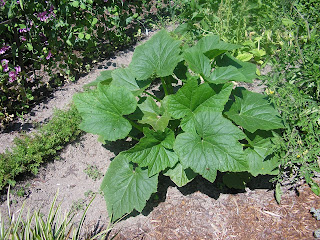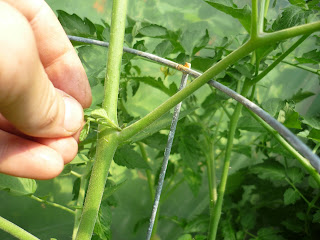A number of factors contribute to the realization of the urban grown garden, foremost among them an actual piece of dirt in which to grow vegetables. For those in want of a simple solution to a despotic landlord or the tragically limiting nature of apartment living, your answer may lie in container gardening. Though this idea is nothing new to many city dwellers, I was recently inspired while staying with my friend Brian at his rented home in the heart of Washington, D.C.
Brian's gracious roommates (thanks again for all your hospitality guys!) live in a 100-year-old Victorian home lacking a yard proper. The space behind the house is a concrete patio meant to be used as a parking spot. While serving as an excellent space to host one mean summertime barbecue, concrete does not the ideal growing space make. Thus, the introduction of the versatile container garden. Brian's roommate Andrew has converted two "muck buckets" to accommodate several varieties of vegetables and herbs.

To purchase similarly sized containers designed for growing vegetables would have cost around $25 each. These buckets cost Andrew around $6, and have conveniently placed rope handles should they need to be moved to follow the sun's changing trajectory in late summer. The only modification to consider is drilling several half inch holes in the bottom of the containers to allow water to drain. The containers (which I believe are 15-18 gallon capacity) are large enough to accommodate between five and six plants each. They are filled with a potting soil mix designed for growing vegetables. This should contain plenty of perlite to ensure good airflow within the soil.

This container contains mostly herbs (from left parsley, oregano, and basil).

The other contains three pepper plants, sage, and a cucumber. Placing the cucumber next to the fence has the added benefit of providing the plant a surface to climb and vine (although allowing it to vine through the fence will prevent moving the container until the plant is done fruiting).
For those with the will but perhaps thought they lacked a way, container gardening provides a fantastic solution to the often perceived problem of concrete and limited space.




































